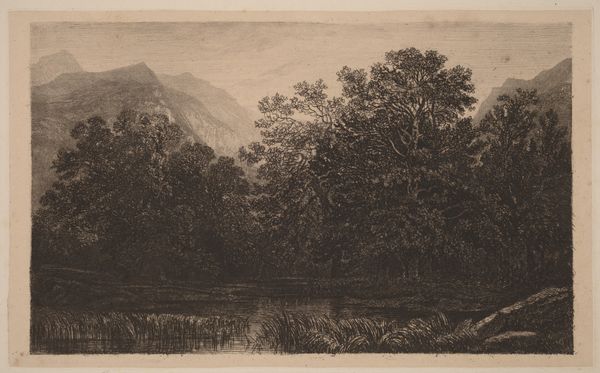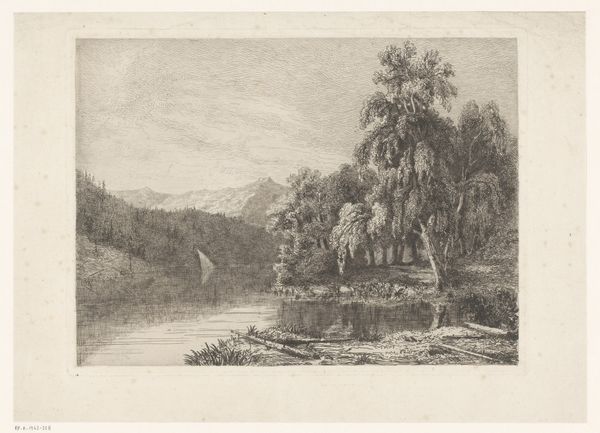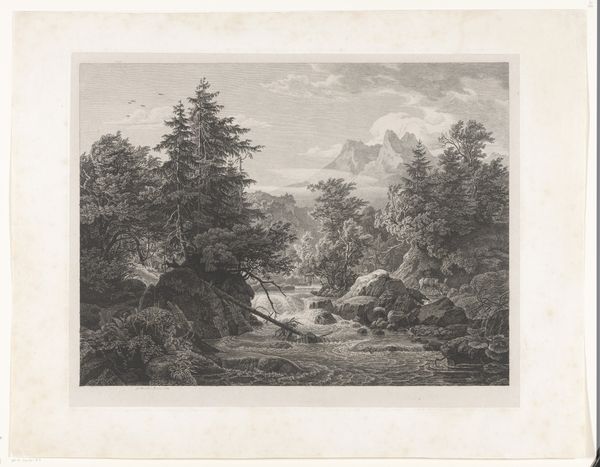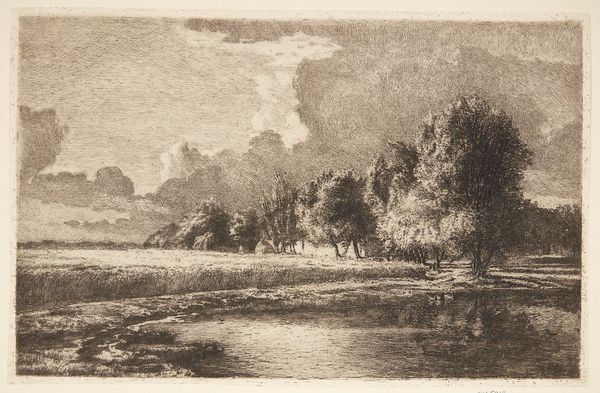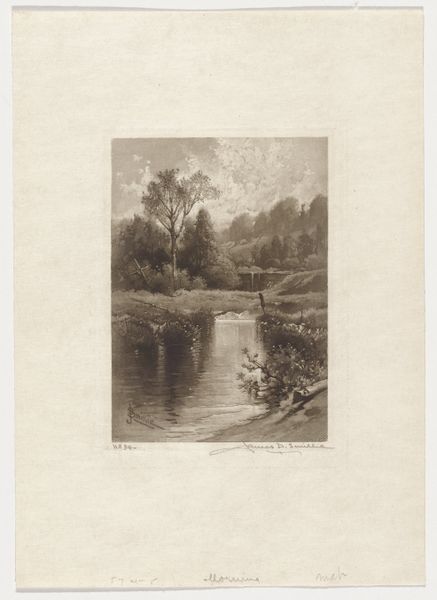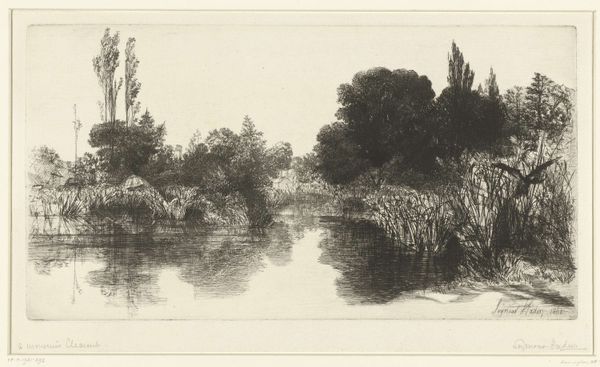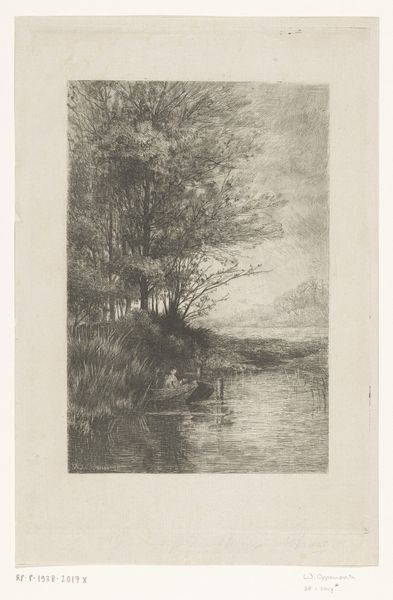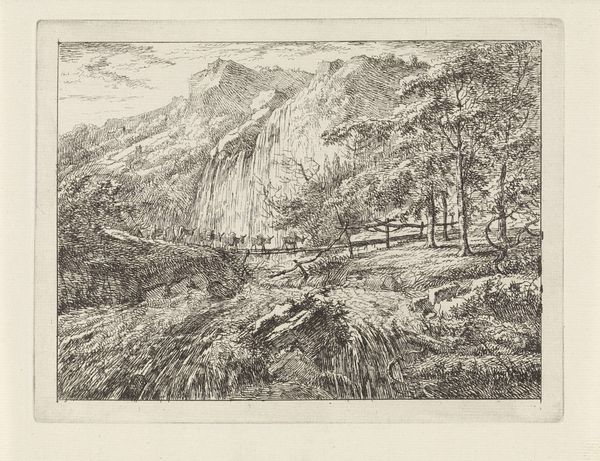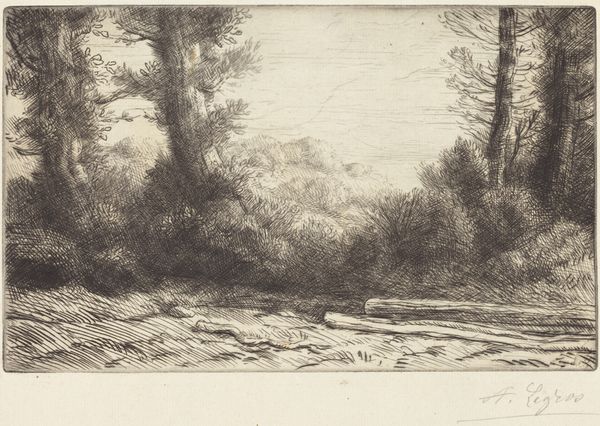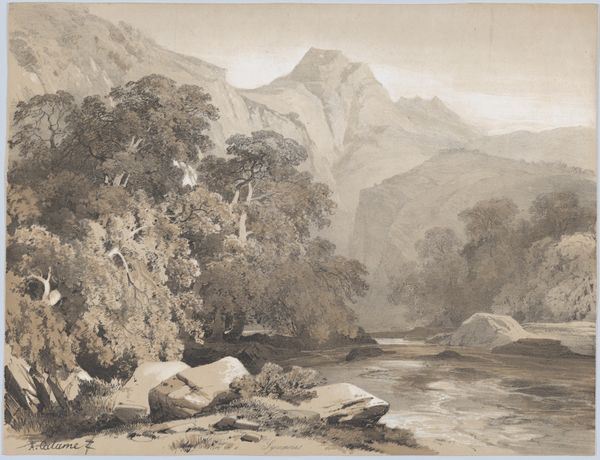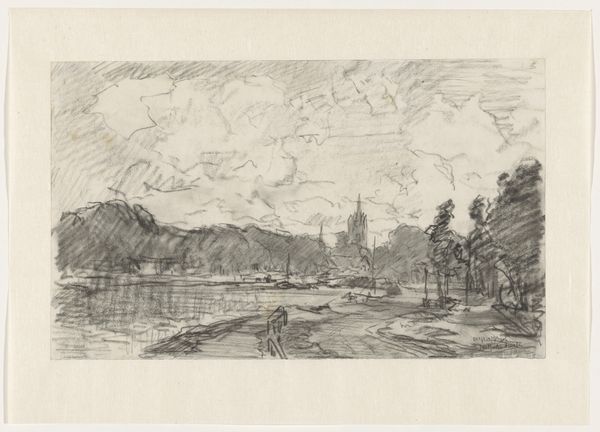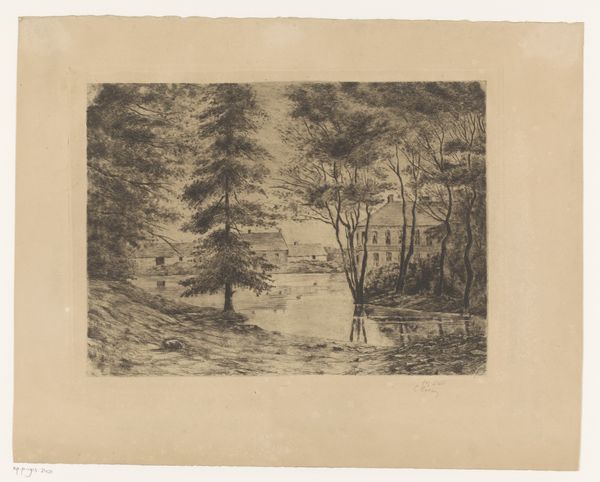
drawing, print, etching
#
drawing
# print
#
etching
#
landscape
#
romanticism
Dimensions: 7 7/8 x 12 1/16 in. (20 x 30.64 cm) (plate)9 5/16 x 12 9/16 in. (23.65 x 31.91 cm) (sheet)
Copyright: Public Domain
Editor: Here we have "Trinity Peaks," an etching by Julian Walbridge Rix, dating from around the 19th century. I find it so serene, the way the mountains are reflected in the still water. What's your take on it? Curator: Beyond its undeniable serenity, let's consider what this image signifies. 19th-century American landscape art wasn't merely about pretty scenery. Think about Manifest Destiny. How might the romanticized portrayal of the "untamed" wilderness legitimize colonial expansion and the displacement of Indigenous populations? Editor: I never thought about it that way. So the beauty could mask a darker ideology? Curator: Precisely. Artists like Rix weren't necessarily malicious, but they were products of their time, reflecting prevailing cultural attitudes. How does the composition – the emphasis on grandeur, the subtle taming of the landscape through perspective – contribute to this narrative? Is there a dialogue occurring in the landscape between control and nature? Editor: Now that you mention it, there’s something possessive about how the trees in the foreground frame the scene. Like a staged photograph. Curator: Exactly. Consider also the absence of any human presence, especially indigenous people. Whose "wilderness" are we really looking at? It is crucial to analyze such absences and silences. They reveal the biases inherent in historical representation. Editor: Wow, I see it now. It's beautiful, but it's also…complicated. Curator: It's about being critically conscious, engaging with the art beyond its surface appeal and questioning the stories it tells – and the ones it omits. Every artwork invites not only contemplation, but investigation. Editor: This has completely changed how I’ll look at landscape art from now on. Curator: As it should. Art serves as an ongoing reminder of not only the possibilities, but the critical importance of awareness in our engagements.
Comments
No comments
Be the first to comment and join the conversation on the ultimate creative platform.

